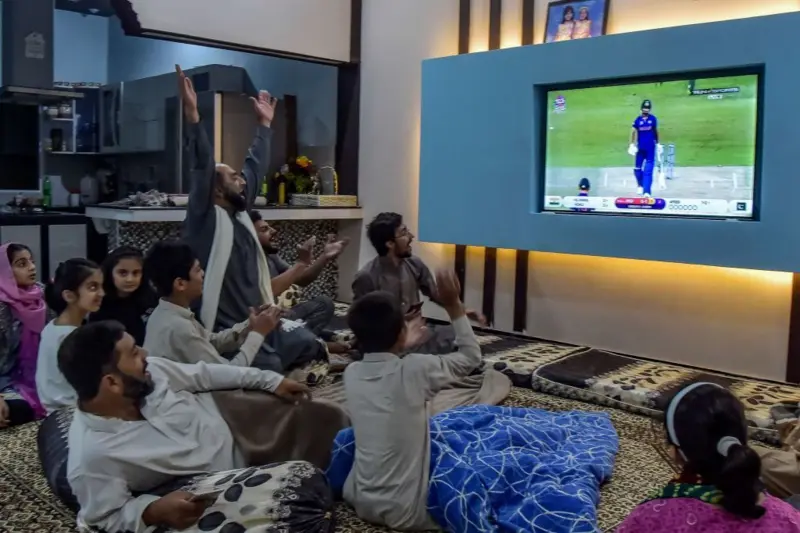عمران خان کی قیادت میں پاکستان کرکٹ دنیا بھر کی مضبوط ترین ٹیموں کے ہم پلّہ آئی
عمران خان کی قیادت میں پاکستان کرکٹ دنیا بھر کی مضبوط ترین ٹیموں کے ہم پلّہ آئی




Lost your password? Please enter your email address. You will receive a link and will create a new password via email.
Sorry, you do not have permission to ask a question, You must login to ask a question.
Please briefly explain why you feel this question should be reported.
Please briefly explain why you feel this answer should be reported.
Please briefly explain why you feel this user should be reported.
"Embark on a journey where knowledge meets curiosity! Nuq4.com is a hub for passionate individuals to share their wisdom, fostering a vibrant community of diverse perspectives. Join us in the exchange of insights, where every voice has the power to enlighten and empower."
عمران خان کی قیادت میں پاکستان کرکٹ دنیا بھر کی مضبوط ترین ٹیموں کے ہم پلّہ آئی
عمران خان کی قیادت میں پاکستان کرکٹ دنیا بھر کی مضبوط ترین ٹیموں کے ہم پلّہ آئی
کیا پاکستان، انڈیا میچ انڈیا کے لیے بھی اہم ہے





دماغ ماؤف ہے، دل گھبراتا ہے۔۔۔ آج تک اس معمے کو کوئی حل نہیں کر سکا کہ جب بھی پاکستان ٹیم انڈیا سے معمول کا کرکٹ میچ کھیلتی ہے، تو کھلاڑی شیر بن کر لڑتے ہیں
دماغ ماؤف ہے، دل گھبراتا ہے۔۔۔ آج تک اس معمے کو کوئی حل نہیں کر سکا کہ جب بھی پاکستان ٹیم انڈیا سے معمول کا کرکٹ میچ کھیلتی ہے، تو کھلاڑی شیر بن کر لڑتے ہیں
آیت اللہ خامنہ ای ایران کے سب کے طاقتور شخص کے طور پر جانے جاتے ہیں
آیت اللہ خامنہ ای ایران کے سب کے طاقتور شخص کے طور پر جانے جاتے ہیں
جیسا کہ دونوں ممالک میں کشیدگی بڑھتی جا رہی ہے ویسے ہی ٹرمپ پر کانگرس میں موجود شاطر ریپبلکنز کا دباؤ بھی بڑھ رہا ہے
جیسا کہ دونوں ممالک میں کشیدگی بڑھتی جا رہی ہے ویسے ہی ٹرمپ پر کانگرس میں موجود شاطر ریپبلکنز کا دباؤ بھی بڑھ رہا ہے
صدام حسین نے اگست 1990 میں کویت پر حملے کا حکم دیا
صدام حسین نے اگست 1990 میں کویت پر حملے کا حکم دیا
اوتمسا یہودیت کے رہنما اتامر بن گویراپنی اشتعال انگیزی کے لیے جانے جاتے ہیں
اوتمسا یہودیت کے رہنما اتامر بن گویراپنی اشتعال انگیزی کے لیے جانے جاتے ہیں
ہالی ووڈ اداکار اورلینڈو بلوم نے سابق منگیتر کیٹی پیری اور سابق کینیڈین وزیرِاعظم جسٹن ٹروڈو کے درمیان مبینہ ڈیٹنگ کی خبروں پر دلچسپ ردِ عمل دیا ہے۔
ہالی ووڈ اداکار اورلینڈو بلوم نے سابق منگیتر کیٹی پیری اور سابق کینیڈین وزیرِاعظم جسٹن ٹروڈو کے درمیان مبینہ ڈیٹنگ کی خبروں پر دلچسپ ردِ عمل دیا ہے۔
See less